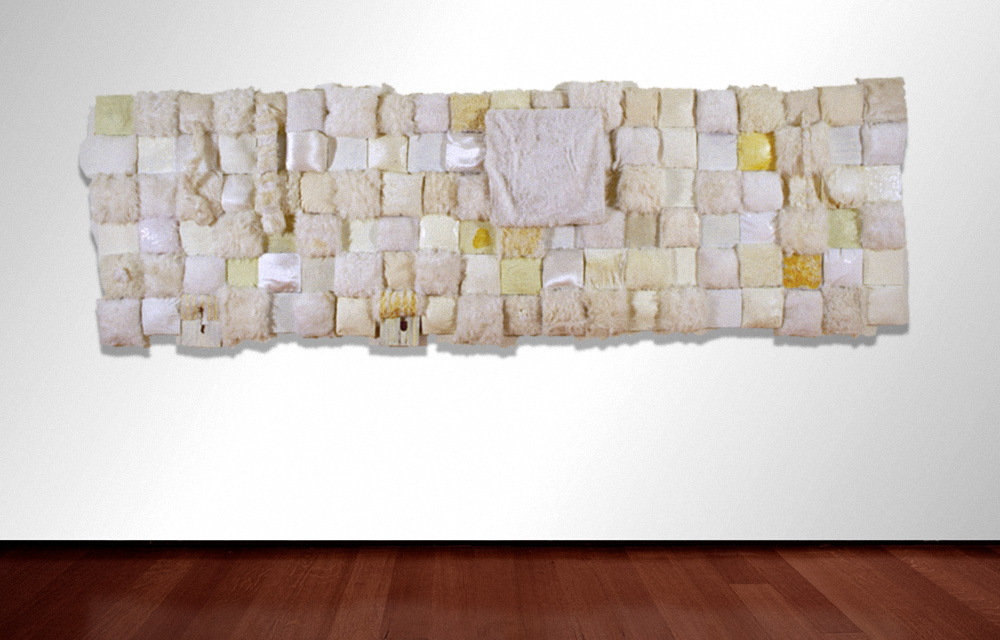


From the beginning of her career, Kathy Temin's obsessive art has been self-consciously articulated in terms of art history. Both highly conceptual and intensely tactile, her knitted, sewn, glued, woven and sculpted objects mimic and parody the tropes of late twentieth-century art. In many ways the quintessential 1990s artist, Temin embraces the imprisonments of theory in mischievous works that tackle the self-styled conundrums of formalism. Like the tiny bit of fluff that destroys a sophisticated piece of machinery, Temin's crafty art ruins the rationalist absolutism of high modernism. 'In my work,' she has explained, 'Minimalism takes on the appearance of what it represses—the body, sentiment and memory'.1 Temin's hand- and home-made objects remake the modern as something messy, capricious, and quite disturbing.
The white square is, as Juliana Engberg has written, 'the holy cow of the modernist schema'.2 Rectangular problem (1992) tackles this shibboleth head-on in a series of furry and shiny irregular squares in a dozen shades of curdled off-white. Like a wall in a padded cell, this art work is as much décor as decoration, at once a nauseous rendition of 1960s shagpile and of the pristine symmetries of modernism. The invocation of the asylum is not accidental: Temin's work pivots on the neurosis of repetition, as much in the inhibitions of Minimalism as in the monotony of women's handiwork. Temin's works are inheritors of the tradition established in Meret Oppenheim's fur-lined tea-cup—Object (1936)—one of the seminal works of the twentieth-century. However, unlike the celebration of women's fancywork in the 1970s by artists like Judy Chicago and Vivienne Binns, Temin taps into the sickness at the heart of female web-weaving. In this sense her work is a collision of art histories—of the masculinist tradition of clean geometries and mathematical sureties, and the feminist response in works such as the unwieldy, free-form macrame hangings of Eva Hesse. The fact that Temin is an Antipodean artist redoubles her subversive take; as Chris McAuliffe has observed, Rectangular problem is a work that 'reads against the grain'.3
Temin’s œuvre is, as she once explained of a particular work, about 'art history, Jewish history, and personal history'.4 In her most recent work, which centres on the pop star Kylie Minogue, the highly conceptual framework in which the earlier works were framed has dissolved into pure obsession. The shame, embarrassment and enthralment of fandom compete with a nostalgia for the music and moods of adolescence, personified in the diminutive figure of the homegrown megastar. Here, art and pop meet in a perfect equivalence, with a melding of the twin worlds of art and interior design. In the retrospection and unrequitedness of these works we may glimpse the arrested adolescence of contemporary popular culture—and possibly of post-modernity itself.
- Hannah Fink
Kathy Temin is represented in Australia by Anna Schwartz Gallery, Melbourne and Sydney and Roslyn Oxley9 Gallery, Sydney.